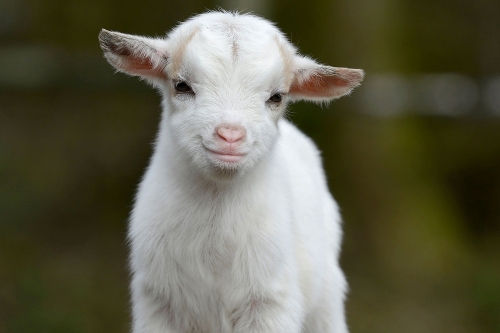Key Points
- Sheep (Ovis aries) have woolly coats and strong flocking instincts.
- Goats (Capra aegagrus hircus) are independent browsers with hair coats.
- Sheep graze on grass; goats browse on leaves and shrubs.
Sheep and goats appear to be pretty close at first sight, particularly when you observe them in a field grazing together. The two animals are of the same family, Bovidae and are one of the oldest domesticated livestock in the world. However, even after being so similar, they are extremely different in physical outlook, behaviour, diet, and applications. These differences are essential to farmers and animal lovers (and indeed any person interested in animal science). Here is a comparison between sheep and goats to help you understand how they differ.
What is a Sheep?

Source: Shutterstock
A sheep is a domesticated ruminant farm animal that has a dense woolly coat. The scientific name for the domestic sheep is Ovis aries. Thousands of years have been spent on raising sheep to get their wool, and milk.
Sheep are known to be grazers and therefore they like to feed on grass and vegetation that grows low. Their instincts of flocking are powerful, as they keep as near as possible to other sheep in order to be protected and to find a degree of comfort. Physically, sheep bear curvy coats of wool, downward pointing tails and have a divided upper lip which makes it easy for them to nibble grass. Most breeds of sheep do not have horns although a few have curled thick horns.
Sheep tend to be quiet, not so inquisitive as goats and like to be together in groups. This behaviour causes them to be easier to manage in open pastures.
What is a Goat?

Source: Shutterstock
Another domesticated animal of the Bovidae family, which is scientifically known as Capra aegagrus hircus. Goats are one of the most versatile animals that can easily survive in rocky, dry or mountainous regions unlike other livestock.
Goats are browsers and that is why they are fond of consuming leaves, shrubs and twigs as opposed to consuming only grass. They are characterized by curiosity, intelligence, and independence. Goats have a higher tendency to explore their environment compared to sheep, and they have a tendency of climbing trees, or fences.
Physically, goats have straight or slightly curved horns, upwards-facing tails, and beards on most of their breeds. Their coats are not wool, but are generally composed of hair, and therefore require no frequent shearing. The goats are also utilized in terms of their milk, and fibre like cashmere or mohair.
Key Differences Between Sheep and Goat
| Feature | Sheep | Goat |
| Scientific Name | Ovis aries | Capra aegagrus hircus |
| Family | Bovidae | Bovidae |
| Tail Position | Hangs downward | Points upward |
| Coat Type | Woolly coat | Hair coat |
| Beard | Absent | Present in many breeds |
| Horn Shape | Often thick and curled | Usually straight and pointed upward |
| Feeding Habit | Grazes on grass and low plants | Browses on leaves, shrubs, and twigs |
| Social Behaviour | Strong flocking instinct | Independent and curious |
| Products | Wool, meat, milk | Milk, meat, fibre |
To sum up, despite their somewhat similar appearance, sheep and goats are different animals. They have different needs, habits, and purposes. Knowing the differences between the two animals is useful to farmers and animal keepers to select the appropriate species according to their land, resources, and objectives.
Enter your Blink text here...
Comments
All Comments (0)
Join the conversation